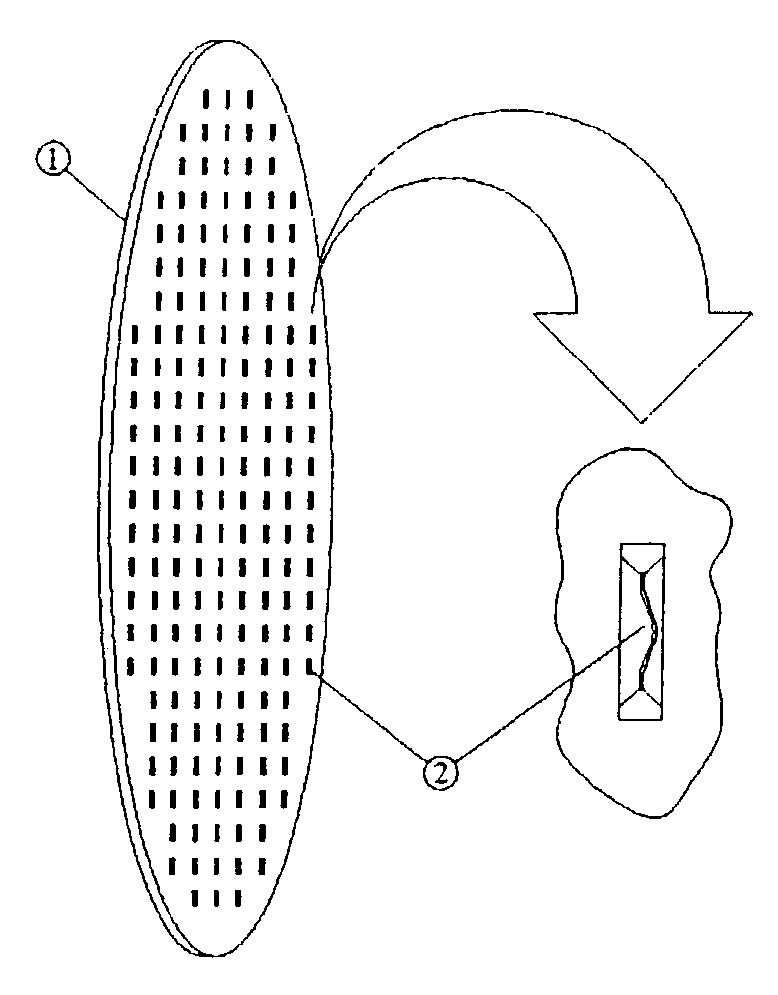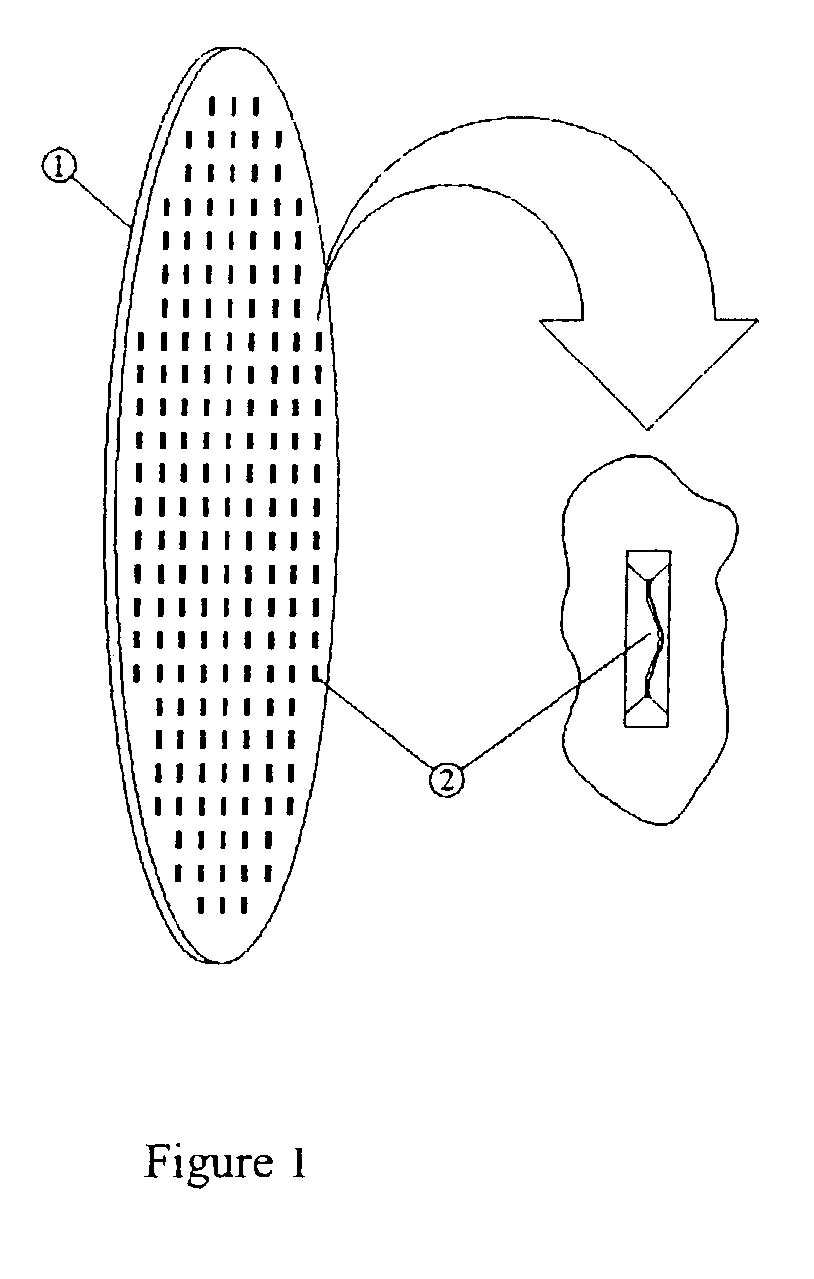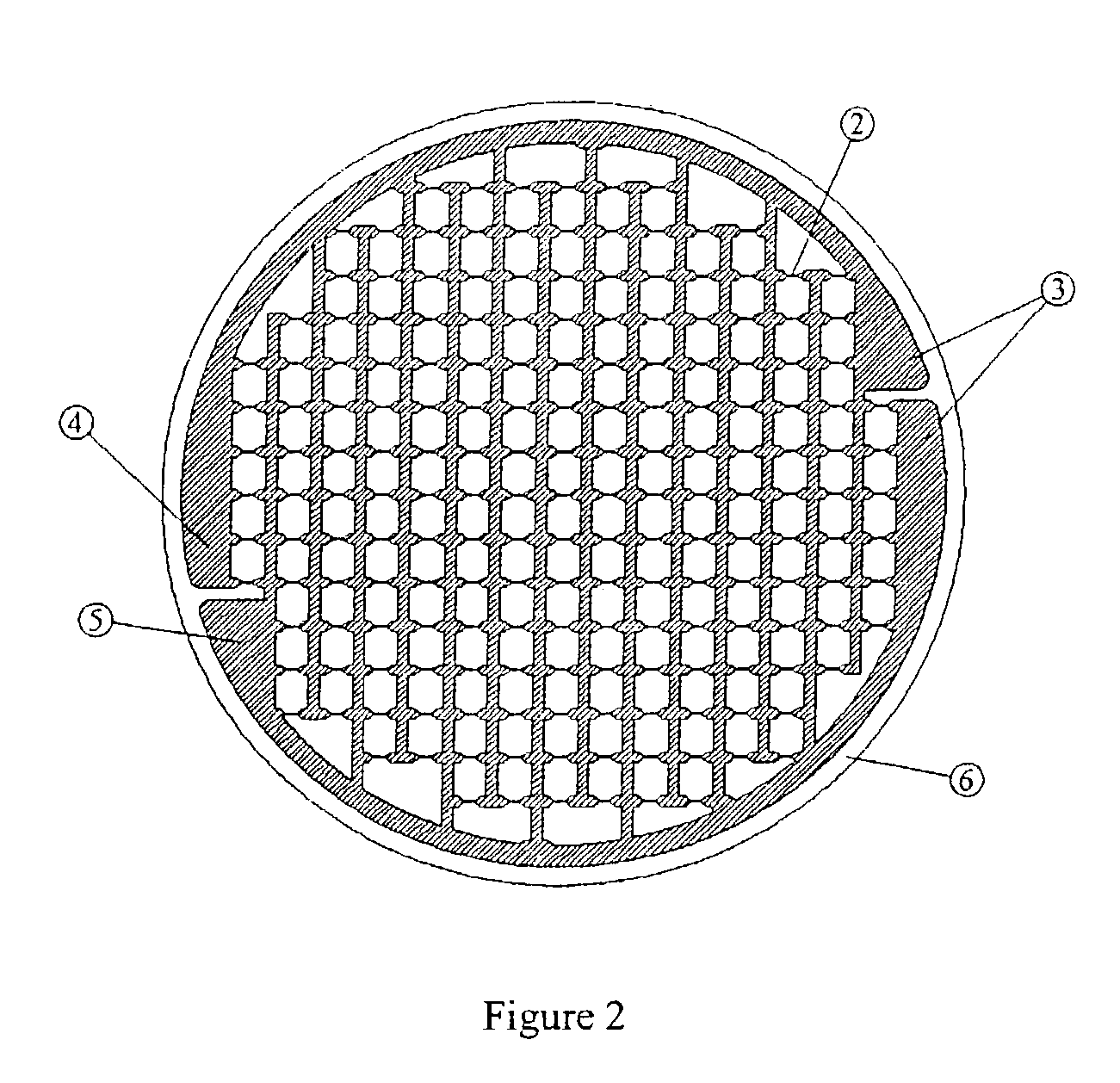Transdermal drug delivery device, method of making same and method of using same
a technology of transdermal drug and delivery device, which is applied in the directions of diagnostic recording/measuring, application, therapy, etc., can solve the problems of inconvenient and uncomfortable method of administration, inconvenient use, and inconvenient use of needles after us
- Summary
- Abstract
- Description
- Claims
- Application Information
AI Technical Summary
Benefits of technology
Problems solved by technology
Method used
Image
Examples
example 1
A Woven Material TFTI Device
[0135]Some embodiments of the TFTI devices involve the use of previously manufactured wire conductors such as tungsten, tantalum, or tungsten alloy wire as the resistive element. There are a variety of methods for incorporating the wire conductors into a TFTI design. These methods include, but are not limited to weaving, sewing, bonding, brazing, spot welding, connecting with conductive adhesives or resins and laminating to a thin film or laminated structure.
[0136]The basis of a woven material TFTI device is a hybrid woven fabric such as what is shown in FIG. 5. FIG. 5 is an enlargement of a section of the hybrid woven fabric and should be considered as extending outward in two dimensions as a repeating structure. The hybrid woven fabric contains a combination of structural fibers (10) and (11) which are not electrically conductive (such as polyester, fiberglass, nylon, mylar, polycarbonate, or the like) and electrically conductive fibers or strands (12) ...
example 2
A Wire Overlay TFTI Device
[0144]This TFTI design utilizes a unique screen-printing process that involves overlaying wires on a substrate and then printing conductive traces over the wires to both form electrical connections with the conductive network and bond the wires to the substrate. This example design also uses SMA wire as the resistive element material to produce an optimized actuation of the poration element. The poration elements are designed to alter their shape during the poration process and breach a drug reservoir directly over the pore site.
[0145]As shown in FIG. 7, multiple lengths of SMA wire (15) such as nitinol are mounted in a frame (16) with a spacing given by the desired element density in the final array. A spacing of 1.00 mm between lengths of SMA wire is used. The frame and mounted wires are then placed over a thin film substrate (17) and standard screen-printing techniques are used to deposit conductive ink (18) onto the substrate and SMA wire combination to...
example 3
A Sputter Deposited TFTI Device
[0148]The first step involved in manufacturing is the deposition of a material such as tantalum by sputtering to form the resistive elements and conductive network on an appropriate substrate such as 50-micron polyamide. FIG. 9 shows the pattern of deposited tantalum traces (21) on the polyamide substrate (22). A parallel electrical configuration is used for purposes of illustration, however the conductive network could be designed to address each poration element single or in a parallel circuit, series circuit or any combination of parallel and series circuits.
[0149]Depending on the properties of the material used for the conductive network and resistive elements, it may be desirable to deposit additional material onto the pattern everywhere except for the resistive elements themselves. The additional material could be any other type of compatible conductive material and serves the purpose of reducing the resistance of the conductive network and thus ...
PUM
 Login to View More
Login to View More Abstract
Description
Claims
Application Information
 Login to View More
Login to View More - R&D
- Intellectual Property
- Life Sciences
- Materials
- Tech Scout
- Unparalleled Data Quality
- Higher Quality Content
- 60% Fewer Hallucinations
Browse by: Latest US Patents, China's latest patents, Technical Efficacy Thesaurus, Application Domain, Technology Topic, Popular Technical Reports.
© 2025 PatSnap. All rights reserved.Legal|Privacy policy|Modern Slavery Act Transparency Statement|Sitemap|About US| Contact US: help@patsnap.com



